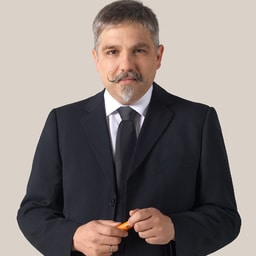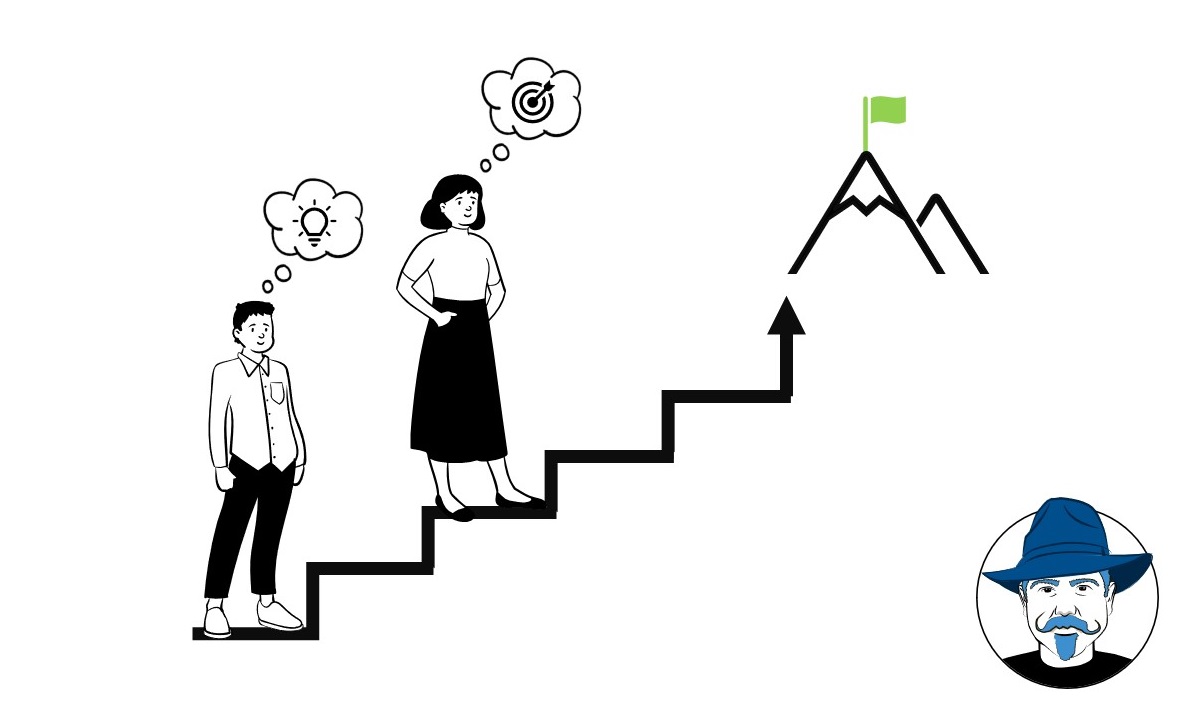Resilience and agility with the right focus
Master Confus, the grand master of confusion and waste, says that if you want to maximise waste in your organisation, ignore the needs of the people who create and ultimately accept the service.
Organisations should be resilient in the sense of being crisis-proof and agile in the sense of being adaptable to constantly changing parameters. They have to be if they want to “survive” in the long run. In such a context, the slogan “We have to become more resilient and agile” is consequently understandable and comprehensible.
However, I wonder if we are not drawing attention to the “wrong” set screws, which are much more the result of completely different course settings. My thesis: Organisations become resilient and agile when they are consistently oriented towards the needs of the people. On the needs of those who enable the creation of value in the organisation and on the needs of those who ultimately take the created performance from the organisation. Organisations become resilient and agile when we think through, develop and improve processes, procedures and standards from right to left. Not a new idea, not a real revolution. Rather a rediscovery of the core idea of the Toyota Production System (Lean, Monozukuri) combined with the realisation that methods (alone) do not make agile and resilient.
Focusing on the world of things and the world of people
The distinction between the world of people and the world of things (processes, procedures, machines) is the first step. People set the pace. His needs determine how things must be designed so that they can be useful. People determine things, not things determine people. Processes and procedures are not ends in themselves. They are tools. Tools that help us to achieve a result with which another person works and for whom it offers added value.
- How often are our processes and procedures far from being of real benefit?
- How often do we, as human beings, have to submit to processes and procedures without really providing any benefit, just because it is defined that way?
Actually, it should be the other way round. First of all, the human being is the centre of attention. With their needs and requirements. The people in the value chain who need parameters so that they can work together to fulfil a human need. And the people who accept the end result at the end of the chain and according to whose needs and benefits the entire process is oriented.
When we change and develop things, we should ask ourselves: does the improvement help the work flow better and do we create benefits or added value, and does the change lead to us achieving better results for our customers? If we answer even one of these questions in the negative, it is not an improvement.
What do we want to achieve and do for whom?
We need clarity to create benefits and realise improvements. Clarity about what we want to achieve and do for whom. The 5S from Lean Management offer a good framework for thinking with their principles. 5S stands for
- Seiri = structuring
- Seiton = systematisation
- Seiso = cleaning
- Seiketsu = standardisation
- Shitsuke = self-discipline
Structuring means separating the useful from the useless. What brings us further, what is necessary to reach the result? What do we want to do for whom and why?
Systematisation means organising the tools we need so that we can access them quickly and easily. We define what it should be like to be successful. This gives us a reference point to compare the target state with the actual state.
Cleaning means regularly checking if everything is as it should be, and if not, making sure it gets back into the right “order”. This also includes checking whether the order is still purposeful or whether it needs to be developed further.
Standardisation in this context means making what contributes to success the standard, so that we can concentrate on what we cannot standardise. Standards are not set in stone. They are alive. We adapt them. To new insights, to changes.
And self-discipline means regularly repeating the process of clarification and reviewing it again and again. Only if we keep reminding ourselves what it takes for results to succeed and what is really necessary for this, and if we know for whom we are doing what, can we consistently align our actions accordingly.
Thinking from right to left
If we want to create value, we should look at our processes from the result and ask ourselves at every step from right to left what it really takes for it to succeed. Success means: What does the next person in the chain need to take over seamlessly? What do we need to succeed in what we want to achieve? What can we simplify and leave out without compromising quality?
For me, this means thinking like a tradesman and focusing on “efficiency”. The “merchant” has only two screws he can turn: purchasing and sales. How the goods are produced does not interest him at first. He cannot influence this. He can “push” the purchase price and “drive” the sales price in order to increase the proceeds. However, he has no influence on whether and how the work is done and how added value is created. He does not create any value himself, but can only buy and sell. The craftsman is different: he creates something. And he can use his knowledge and skills to reduce the non-value-added work as much as possible without neglecting quality. If possible, he tries to avoid everything that does not contribute to the result. To do this, he develops his knowledge and skills by concentrating on what he wants to achieve. Not for himself, but for the people who ultimately use and accept his work.
Transferred to our procedures, processes and way of working, this means that we approach from the customer and his needs. If we look at each step from right to left, we think from the end and ask ourselves the question:
- What does it really take to get us to the desired result?
- What does the next person in the chain need to take over seamlessly, so that in the end something comes out that creates added value.
Everything else is superfluous work and we can leave it out! At this moment we focus on the things that contribute to success. How do we get to what is really needed and how can we make it easier to do. If we succeed in concentrating on the essential, the necessary, we are more agile and can act instead of react.
“Simplicity – the art of maximising the amount of work not done – is essential.”¹
The change for the better
Kaizen is
- a way of thinking and working that focuses on incremental improvement and perfection.
- It is something that takes place constantly and in which everyone is involved.
- when every single employee becomes a co-thinker and co-actor.
Figure 1: Kaizen is… ²
“Review” is not a one-time thing. Continuous change for the better (kaizen) happens all the time. It is not something we do only temporarily once in a while, but something that is natural in our daily actions and thinking.
When we take kaizen for granted, it becomes something normal. Nothing threatening. The organisation sees new impulses, ideas, changed needs, new insights as an opportunity to make things work better. Better success in the sense of simpler and in the sense of more effective. Change then does not mean crisis, because the organisation has learned to deal with change, but a normal part of further development towards new insights and ideas. Even when we move in stable environments. Making things better, simpler and yet meaningful strengthens every organisation. By constantly making small improvements, the organisation learns to cope when things don’t work as they should and becomes more crisis-proof.
Organisations become more resilient and agile because…
Organisations become more resilient and agile because they see change for the better as something normal and because they focus on the needs of the people who add value and the people who embrace the outcome. An organisation that focuses on success and the value-added outcome adapts to change consistently and continuously. Such an organisation reflects change and continuously evolves. Resilience and agility of the organisation are the visible result. Becoming more agile and resilient as an organisation means first answering the question of why, and from that why, focusing on success by putting people’s needs for success before things. All in the spirit of Lean and Agile to become a crisis resilient organisation.
Notes:
Do you already know Tom’s Gedankenblog? For many years he has been reflecting there on different perspectives on agility, lean management, kanban, etc. And his new Gedankenblitze are also very popular!
[1] Principles behind the agile manifesto
[2] Illustration by Alejandra García and Adam Rohn
If you like the post or want to discuss it, feel free to share it in your network.
Thomas Michl has published other posts on the t2informatik Blog, including

Thomas Michl
Thomas Michl holds a degree in public administration and an MBA. He worked in the public sector for ten years before joining borisgloger consulting GmbH in 2018 and then Exxeta AG. Today, the passionate agilist works for FourEnergy GmbH as a Senior Business Consultant.
Thomas Michl is one of the founding members of the Agile Administration Forum and a board member of the supporting organisation. The Agile Administration Forum is run on a voluntary basis and has set itself the goal of bringing the idea of the Agile Manifesto to public administration by providing a platform for dialogue and peer-to-peer advice.



